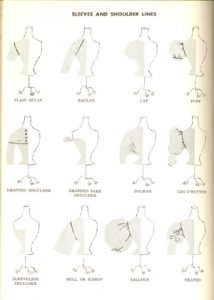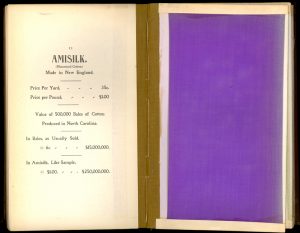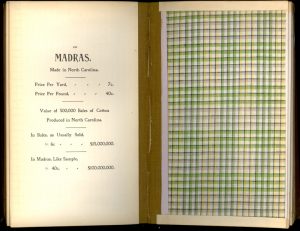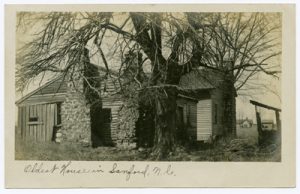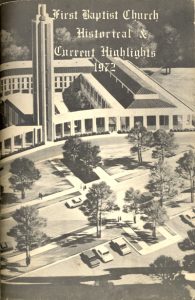The summertime is in full swing here in Chapel Hill, and like most people I’m running around looking for something to wear that won’t make me pass out from heatstroke in ten minutes or less. A surefire answer, for me at least, has been to make some garments myself. For a quick course in choosing fabrics and laying out pattern pieces, come in to the NCC’s lovely (and air-conditioned) reading room to peruse Margaret Hoffman’s Sew Far, Sew Good!. This 1958 publication starts with the aforementioned textile basics, expounds on some design philosophy, and even delves into a modest gallery of women’s apparel silhouettes and style lines (see sample image below).
And even if you’re an accomplished seamstress, pay us a visit for some textile inspiration: I recently found D.A. Tompkins’ Cotton Values in Textile Fabrics, printed in 1900, in our stacks. This fantastic volume showcases swatches of NC-produced cotton fabrics, from a North Carolina-made 10-ounce duckcloth to imported Swiss embroidery. My personal favorites are the rich violet “Amisilk,” a mercerized cotton with a sateen face, and the green and yellow checked Madras shirting.

